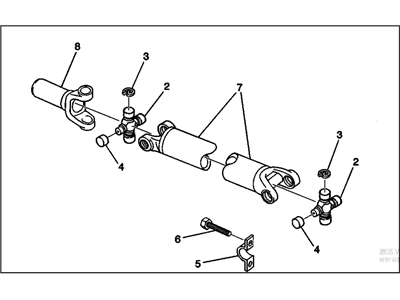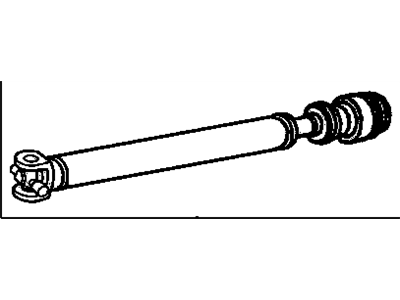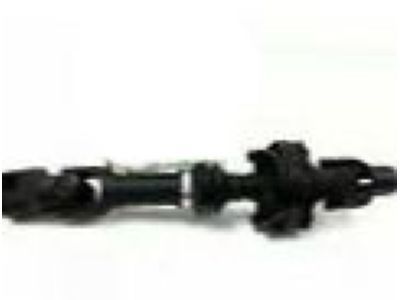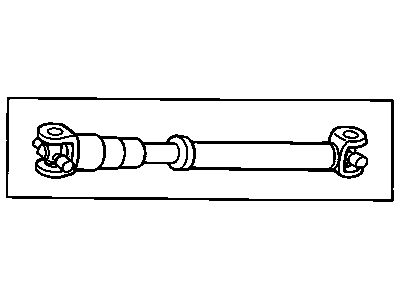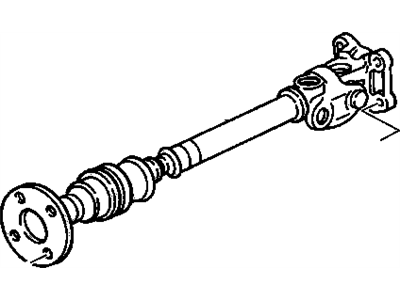
My Garage
My Account
Cart
Genuine GMC Jimmy Drive Shaft
Axle Shaft- Select Vehicle by Model
- Select Vehicle by VIN
Select Vehicle by Model
orMake
Model
Year
Select Vehicle by VIN
For the most accurate results, select vehicle by your VIN (Vehicle Identification Number).
46 Drive Shafts found
GMC Jimmy Propeller Shaft Assembly
Part Number: 26046834$8.67 MSRP: $517.43You Save: $508.76 (99%)Ships in 1-2 Business DaysGMC Jimmy Front Axle Propeller Shaft Assembly
Part Number: 15062956$68.91 MSRP: $812.88You Save: $743.97 (92%)Ships in 1-2 Business DaysGMC Jimmy Front Axle Propeller Shaft
Part Number: 94717722$395.36 MSRP: $891.48You Save: $496.12 (56%)Ships in 1-2 Business Days
| Page 1 of 3 |Next >
1-20 of 46 Results
GMC Jimmy Drive Shaft
The Drive Shaft in GMC Jimmy automobiles is as crucial as any other because it delivers mechanical power and torque from the engine or the transmission to the driving wheels, thus allowing the movement of the car. This componen is used to resit torsion and shear stress and at the same time is light to minimize the part's inertia. Differences in alignment of connected components can be met with the help of universal joints or splined joints which are installed in GMC Jimmy Drive Shafts. Every now and then various driveshaft styles have been used in GMC Jimmy models some of which include; the one piece and two piece styles. The two piece driveshaft is especially designed with reference to crash safety measures. Four-wheel and all-wheel arrangements require many driveshafts, and one or more transfer cases to split the torque output between the front and rear axles. Thus, such designs guarantee the optimal performance irrespective of the type of road to be covered.
Each OEM GMC Jimmy Drive Shaft we offer is competitively priced and comes with the assurance of the manufacturer's warranty for the part. Furthermore, we guarantee the speedy delivery of your orders right to your doorstep. Our hassle-free return policy is also in place for your peace of mind.
GMC Jimmy Drive Shaft Parts Questions & Experts Answers
- Q: How to remove the rear drive shaft on GMC Jimmy?A:Remove the negative terminal connecting wire from the car battery. First, lift the car and hold it still with jackstands while placing the transmission in Neutral gear and releasing the parking brake. Block the front wheels so the car won't move or roll during work. Before you take the driveshaft and differential apart, make marks on their parts with a scribe, hammer, punch, and paint. These marks will help you put things back together correctly. Take out this part's front and rear joint bolts and straps while you rotate either the shaft or wheels to make everything easy to reach. Unbolt and take off the four bolts, nuts, and washers from the companion flange at the back of 4WD trucks. To take out the center same bearing bracket on two-piece driveshafts, first unscrew and take off all bolts, nuts, and washers. Use tape to hold the bearing caps to the spider while you work so they can't fall off when you take the parts apart. Pull down the driveshaft's rear section, then ease out the front end of it through the transmission or transfer case opening. In case your vehicle has a splined yoke, place a plastic bag over the transmission or transfer case housing to keep oil from spilling or mixing with dirt. To replace the middle bearing on a two-piece drive shaft, loosen the collar, disconnect the two parts, remove the collar and bearing, put the new parts back in place, recombine the shaft sections, and secure the collar. Take off the plastic bag from around the transmission or transfer case and clean the space well. Check for leaks and dirt damage to the oil seal. Put the front of the driveshaft into its spot on the transmission or transfer case. Also connect the companion plate and tighten all bolts just by hand. Turn the rear wheel as needed, while lifting up the other part of the driveshaft and lining up the marks. After removing the tape from the bearing caps, bolt in the straps and fasten them until you reach correct tightness. Lower the car back down, reconnect the battery, and put the negative connection first. If your vehicle is 4WD, lift it and place it safely on jackstands, taking off the skid plate if your truck has one. Before taking out the bolts, make a note on where the driveshaft meets the front differential flange. First disconnect the driveshaft's front end, and pull the transmission output shaft apart from the CV joint. Start by attaching the front end of the driveshaft to the front differential flange. Add straps and bolts, but loosen them at first for easier adjustments. Move the driveshaft to the right length by either pushing it forward or pulling it back. Connect the rear end to the transfer case, secure with straps, and bolt down. Tighten all fasteners with care, following recommendations carefully.
